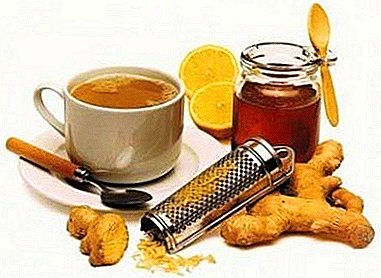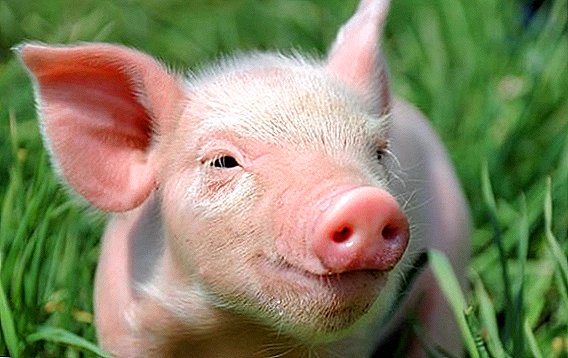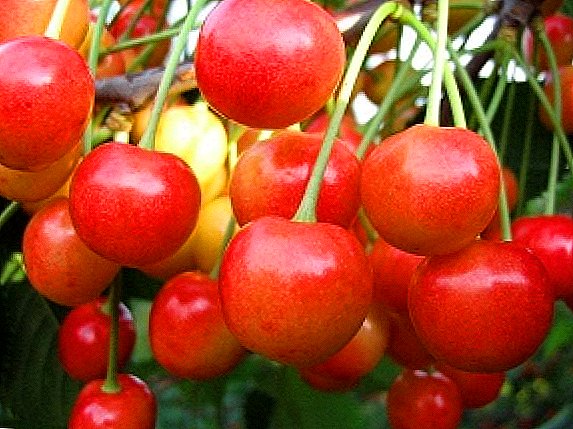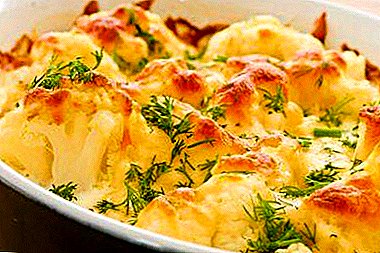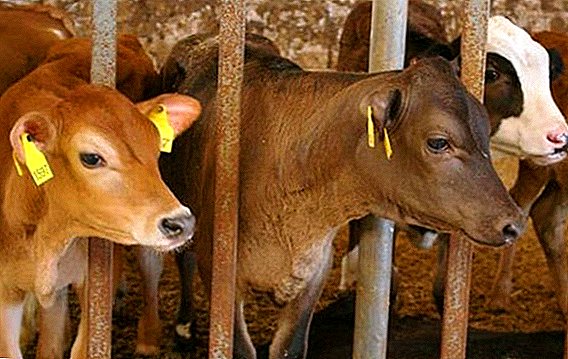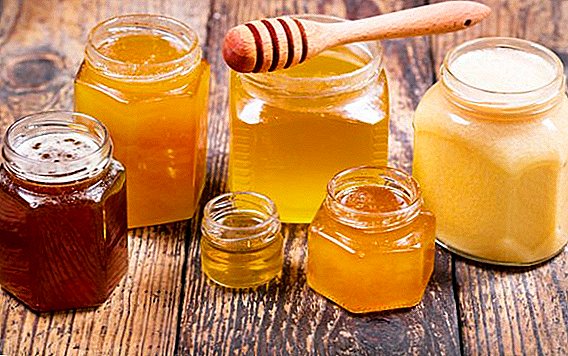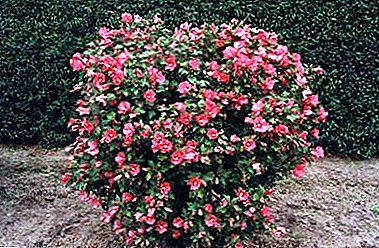
Syrian hibiscus is a magnificent variety of an exotic plant that, with proper care and proper wintering, can easily survive the temperature conditions of the middle zone, delighting with abundant flowering.
When buying a plant, the gardener thinks about how to grow the plant correctly, so that it would please him with abundant flowering.
This article will look at how to care for a plant in the open field and after purchase, how to propagate, and also find out what pests can harm the flower and how to deal with them.
How to care for a plant outdoors?
Temperature
In summer, the plant feels comfortable at temperatures up to 28 degrees. Aggressive direct sunlight and the temperature above thirty shrubs difficult to endure, therefore, with prolonged heat, the bush must be slightly hardened.
Syrian hibiscus is resistant to low temperatures with proper shelter for the winter. The older the plant, the more it is frost resistant.
Watering
Watering hibiscus prefers moderate, as the top layer of soil dries. The norm is watering in the amount of ten liters per bush every week. If the weather is hot, you can water the plant daily.
When watering a blooming hibiscus should avoid moisture on the petals., from this they lose their decoration. Watering should be basal.
Lighting
Syrian hibiscus gratefully perceives the sunlight, but if in the conditions of the garden it is possible to offer him only light penumbra, this is not a reason to refuse to plant a decorative handsome. In such conditions, he is also able to please abundant flowering. Intolerance in plants only to strongly darkened places.
A place
A well-lit place is suitable for planting Syriac hibiscusprotected from northern, cold winds and drafts. The plant, due to its appearance, fits perfectly into the rose garden, it can also be placed next to the bushes of lavender, which with its smell drives off the aphid dangerous to hibiscus.
Spring cropping
 With the help of trimming the shrub can be given various forms - a cube, a ball or a pyramid.
With the help of trimming the shrub can be given various forms - a cube, a ball or a pyramid.
Also good pruning to stimulate flowering. The plant reacts painlessly to the procedure.
- It is best to carry out this pruning at the end of spring, before the hibiscus begins to bloom.
- Flower buds are formed on fresh shoots, and the more there will be, the more buds will be. The plant will acquire a highly decorative look.
- The pruning of a bush includes the removal of old, lifeless branches, healthy shoots are shortened by two thirds.
- To create a beautiful shape, branches around the main shoot are cut to different heights.
Priming
Syrian hibiscus will only develop properly in fertile, permeable soil with good aeration. To maintain the root system in a healthy state, the plant must have drainage. If the original soil is poor and has not been fertilized for a long time, before planting hibiscus, it should be optimized to the desired state.
If the soil in the flower bed is clay, this is corrected by adding half a bucket of crushed peat powder to each square meter. If the original soil is sandy, you need to add a half-bucket of ordinary garden soil to it and dig it up. The land around the plant needs regular loosening.
Top dressing
In the summer for adult plants fertilizing is carried out twice a month. This can be done by scattering ready-made mineral fertilizers on the radical soil layer, which will get to the roots of the plant along with water during watering. Top dressing must contain nitrogen.
Transfer
If the site for planting hibiscus was originally chosen correctly, it can grow without a transplant to twenty years.
But if for one reason or another the bush needs to be moved to another place, it should be done in early spring, after cutting the shoots to half the length and before the flowering begins.
Transplant the plant as follows:
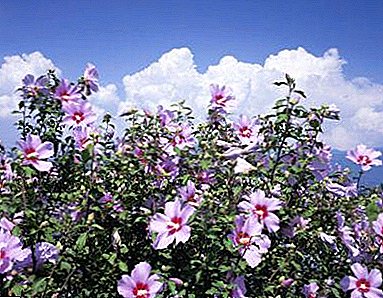 A pit is being prepared, at the bottom of which a drainage from a 15 centimeter layer of broken red brick is organized. The same layer of sand is poured onto it and a layer of compost is laid on top, also 15 centimeters. Compost sprinkled with the same layer of sand. The result is effective and nourishing drainage.
A pit is being prepared, at the bottom of which a drainage from a 15 centimeter layer of broken red brick is organized. The same layer of sand is poured onto it and a layer of compost is laid on top, also 15 centimeters. Compost sprinkled with the same layer of sand. The result is effective and nourishing drainage.- The plant is carefully picked from the old place.
- Hibiscus is placed in a prepared pit and covered with earth, previously mixed with peat and sand in a ratio of 2: 1: 4.
- The hibiscus root collar after transplantation should be slightly covered with earth.
After transplanting around the plant it is necessary to make a watering circle.and moisten the soil.
After the water is absorbed, and the soil settles, you need to pour the earth mixture, before aligning with the total surface of the flower bed.
Wintering
If the frost-resistant Syrian hibiscus grows in the gardens of the southern regions, then it does not need special preparation for winter. In the conditions of northern regions and localities with a harsh snow-free winter, the plant needs proper shelter. Competent preparation for the winter of the Syrian hibiscus consists of several stages:
- Watering.
- Hilling.
- Soil mulching and shelter.
A few days after watering the bush spud, using ordinary garden soil with the addition of humus and sand to prevent overheating of the root system.
The last stage of preparation for winter is warming. Conduct it from the second half of November. Especially in need of shelter young plants.
Shelter can be organized in two ways:
- Bend the whole bush to the ground, cover it with non-woven material, cover it with plastic wrap on top and press down with something heavy.
- Set around the bush frame and wrap it with several layers of covering material. If the winter promises to be harsh, then it can be added to this shelter.
A photo
In the photo below you will see a photo of a flower:





Growing from seed and cuttings
From seed
You can sow hibiscus seeds for seedlings in a seedling box or garden greenhouse. Sowing dates for a razadny box - the beginning of March, for a street greenhouse - the second half of May or the first decade of June.
- Seeds are laid out in the planting furrows, a depth of not more than one centimeter, covered with soil and watered.
- Before the first shoots, the seedling capacity is covered with polyethylene, which is removed when the first shoots appear, the street greenhouse is also kept closed, periodically opening for ventilation and moderate irrigation.
- After the emergence of seedlings, care of the seedlings is reduced to loosening the inter-row space, timely watering, treatment with insecticides and thinning.
- After the appearance of five or six of these leaves, when young hibiscus reach 15-25 cm in height, they can be transplanted to a permanent place in the flower bed.
Important! A plant derived from seeds can only bloom in the third or fourth year.
From cuttings
Planting stock is harvested at the end of July.when hibiscus has enough green mass for grafting. The stalk must be green, at least fifteen centimeters in length, with two or three internodes.
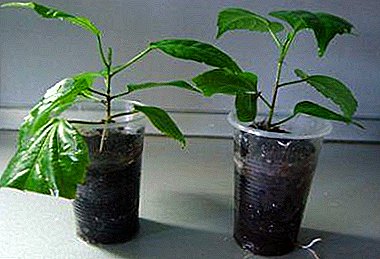 Planting material is soaked for fifteen minutes in a special solution that stimulates the formation of roots. For this, both ready-made store preparations, such as "Kornevin", and home-made formulations, such as a mixture of water and honey in a ratio of 10: 1.5, are suitable.
Planting material is soaked for fifteen minutes in a special solution that stimulates the formation of roots. For this, both ready-made store preparations, such as "Kornevin", and home-made formulations, such as a mixture of water and honey in a ratio of 10: 1.5, are suitable.- After processing the cuttings with root-forming preparations, they are planted in small containers and watered.
- The pot is covered with a plastic bag, thus creating a small greenhouse that prevents evaporation of moisture from the soil and speeds up the process of formation of roots. Polyethylene must be removed daily for two weeks to air and remove the resulting condensate.
- After the allotted time, the breeding grounds open, further care is regular watering and loosening the soil.
- Two months later, the young plants are transplanted into separate pots with a capacity of about five liters, and with the arrival of spring they are planted in a permanent place in the garden.
How to care for the first time after planting?
The first couple of years after planting the plant is particularly sensitive. It will not tolerate competition with weeds in the neighborhood, so you need to regularly get rid of them. Even if a young shrub is grown in a region with warm winters, in the first year he will need shelter in order not to die.
The rest of the care does not differ from what is necessary for an adult plant - regular watering, feeding and loosening the soil.
Diseases and pests
- If the hibiscus leaves turn yellow, this may indicate root damage or insufficient watering during dry periods.
- The fall of the lower leaves and the appearance in their place of new ones with a yellowish tinge indicates the infection with chlorosis. This is due to a lack of iron and nitrogen in the soil. To prevent the problem, iron chelate is added to the water for irrigation, and in the spring, fertilizers are applied with nitrogen fertilizers.
- Syrian hibiscus refers to plants that are resistant to pest infestation, but with improper care and lack of moisture it is attacked by spider mites, whitefly, thrips and aphids. To help the shrub, you can use insecticides.
Care for Syrian hibiscus can not be called difficult. Compliance with the irrigation regime, the organization of proper wintering and on-time trimming of the shrub, give a truly amazing result. Stable flowering and lush ornamental foliage become a worthy reward for a gardener.


 A pit is being prepared, at the bottom of which a drainage from a 15 centimeter layer of broken red brick is organized. The same layer of sand is poured onto it and a layer of compost is laid on top, also 15 centimeters. Compost sprinkled with the same layer of sand. The result is effective and nourishing drainage.
A pit is being prepared, at the bottom of which a drainage from a 15 centimeter layer of broken red brick is organized. The same layer of sand is poured onto it and a layer of compost is laid on top, also 15 centimeters. Compost sprinkled with the same layer of sand. The result is effective and nourishing drainage. Planting material is soaked for fifteen minutes in a special solution that stimulates the formation of roots. For this, both ready-made store preparations, such as "Kornevin", and home-made formulations, such as a mixture of water and honey in a ratio of 10: 1.5, are suitable.
Planting material is soaked for fifteen minutes in a special solution that stimulates the formation of roots. For this, both ready-made store preparations, such as "Kornevin", and home-made formulations, such as a mixture of water and honey in a ratio of 10: 1.5, are suitable.
